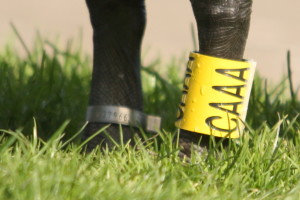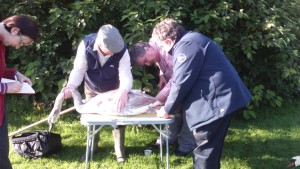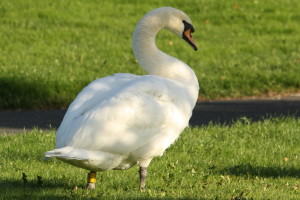- The remarkable bird life of the Wakatobi Islands, SE Sulawesi: hidden endemism and threatened populations - 10/07/2020
- The Bird Life of Wawonii and Muna Islands Part I: biodiversity recording in understudied corners of the Wallacea region - 30/06/2020
- Comparing the biodiversity and network ecology of restoredand natural mangrove forests in the Wallacea Region. - 09/12/2019
For those of us with an interest in the natural world, Mute Swans (Cygnus olor) are a staple of urban wildlife in Dublin, present in many parks and along both canals. However, it has been 25 years since there has been any real assessment of the state of the Mute Swan population in the Dublin region (1). This has been a period of immense change in the urban landscape.
Mute Swan © Graham Prole
This summer, the Irish Midlands Ringing Group (IMRG) started a monitoring project to assess the state of the Mute Swan population in the Dublin region and to better understand their population dynamics, coordinated by Graham Prole of the IMRG https://irishmidlandsringing.wordpress.com/2015/10/05/mute-swan-colour-ringing/. The first stage of the project was a comprehensive survey of breeding by swans in the Dublin region. This revealed high nest occupancy rates, with 42 pairs successfully producing cygnets, an increase on the last survey 25 years ago. The monitoring of these breeding attempts is ongoing, with 20 pairs still with cygnets. The new habitat provided by the artificial lakes constructed in parks in the Dublin suburbs (such as Tymon Park in Tallaght), seems to have been a significant boon to the swan population. Breeding success was particularly high in these parks, likely helped by members of the public regularly feeding the swans in these areas.
The results of the swan breeding survey have raised more questions. While breeding success seems to be high, bachelor herds (groups of juveniles who have been forced out by their parents and adult birds who have yet to win a territory) are much reduced in traditional locations. To gain a better understanding of the population dynamics and movements of the Dublin region swan population, the IMRG has commenced a colour ringing scheme. The colour rings are yellow darvic rings with a unique inscription in black letters fitted to the swan’s leg.
 The colour rings © Graham Prole
The colour rings © Graham Prole
Catching the swans for ringing is greatly aided by the fact that many of them are used to being fed bread by the public, but it can still be a daunting task to the uninitiated. Mute Swans are powerful birds, with a reputation for being aggressive (a reputation which some individuals certainly live up to!). They are caught by hand when they come to feed on bread, taking care to prevent them from flapping and straining their wings. The ring is quickly attached and they are released back onto their patch. The swans quickly recover and don’t seem to hold any grudge, as ringed individuals often return to take bread from the team which ringed them!
 The ringing team hard at work © Darren O’Connell
The ringing team hard at work © Darren O’Connell
To date, over 60 swans have been colour ringed. Re-sightings of these rings allow the lives of individual swans to be followed without any further disturbance. Of particular interest is the dispersal of juvenile swans and the recruitment of bachelor birds into the breeding population. This project is already beginning to generate data as the first juveniles begin to disperse to join bachelor herds, with ringed juveniles moving from Tallaght to the Grand Canal, Swords estuary and Bray Harbour. The furthest dispersal distance so far has been 18km. The colour rings are large enough to be easily read by members of the public, promoting community engagement with the project. Any re-sightings would be greatly appreciated and can be sent to mute.swan.ring@gmail.com.
Author: Darren O’Connell, @oconned5
Images: Darren O’Connell & Graham Prole
Acknowledgements
A special thanks to Graham Prole for coordinating this project, to all IMRG members who helped at the catches and to South Dublin and Kildare County Councils who provided permission and financial support. This work was carried out under licence from the National Parks and Wildlife Service and British Trust for Ornithology.
Bibliography
- Collins, R. and Whelan J. (1994) Movements in an Irish Mute Swan Cygnus olor Ringing and Migration. 15: 40-19. doi: 10.1080/03078698.1994.9674070


